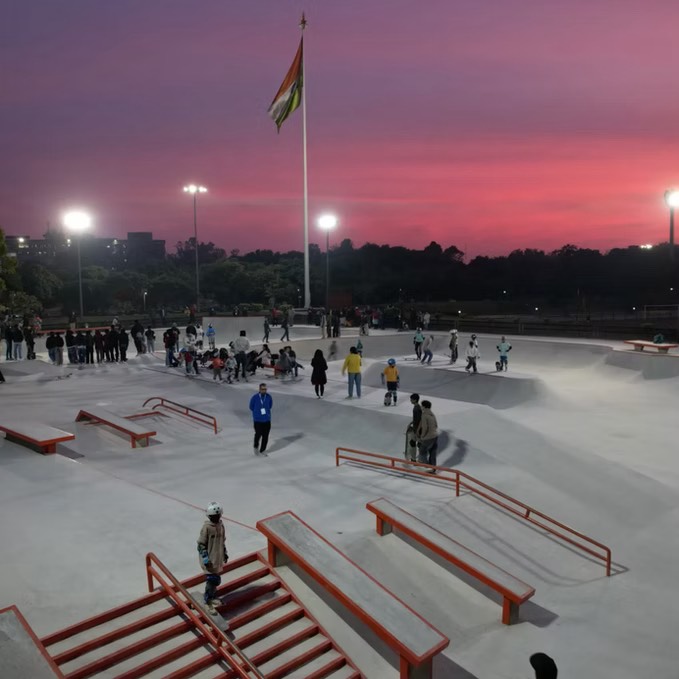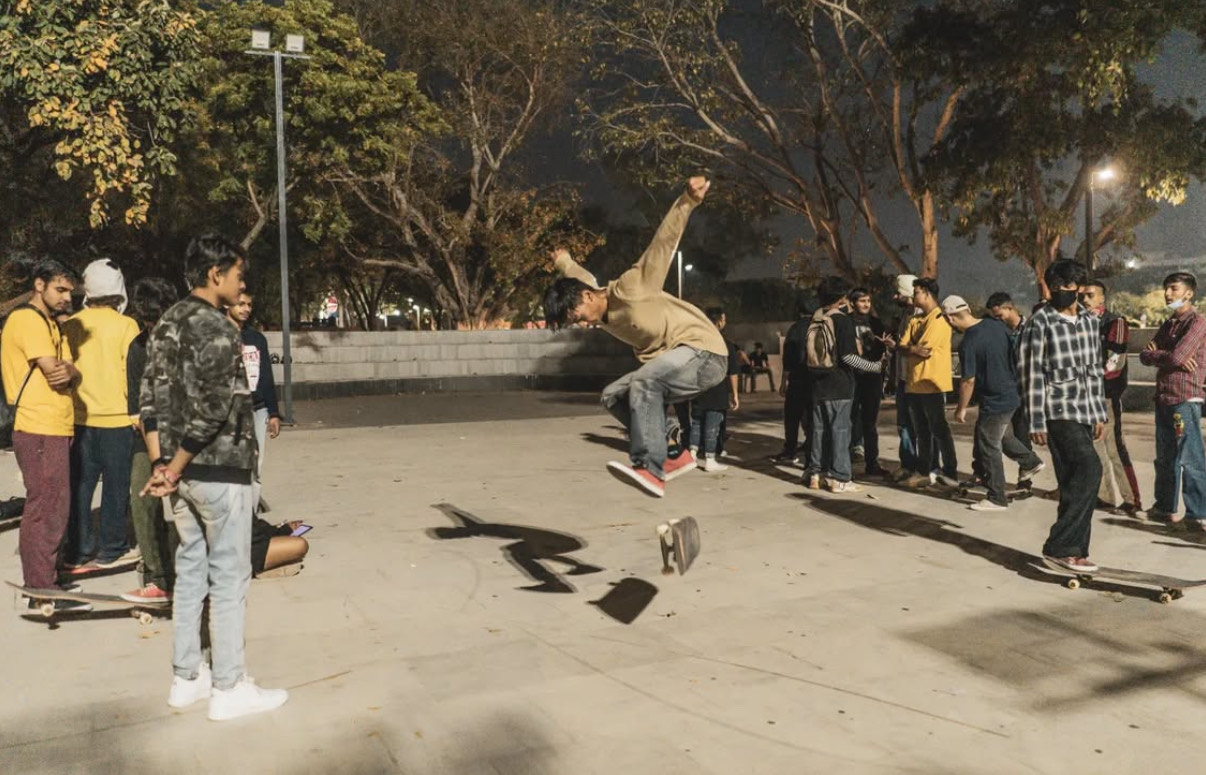How skateboarding is growing big in Chandigarh
Chandigarh:
On June 21, more than 150 people filled Chandigarh’s Tiranga Urban Park in Sector 17 with skateboards in hand to celebrate the annual ‘Go Skateboarding Day’. It may have been an unusual sight for onlookers, but the skateboarding community in Chandigarh has been growing long before the skatepark was built.
With its debut as an Olympic sport in the 2020 Tokyo Olympics, skateboarding has made its way into the mainstream as a recognised extreme sport. Already, skaters in cities like Delhi and Mumbai are being sponsored by the likes of Redbull and Vans. Now, the sport is making inroads into Chandigarh. “The city’s architecture makes it very skateable,” says Rohan, a local skateboarder and co-founder of Crashers Crew, one of Chandigarh’s skate crews.
Skateboarding is a creative sport — with a big enough imagination, you can skate almost anywhere. For kids who have grown up watching skateboarding legends like Rodney Mullen and Tony Hawk, Chandigarh’s infrastructure offers ample space to perform tricks and practice. The ledges, railings and benches are a haven for skateboarders.
The Rose Garden underpass, the Sector 17 market plaza and its multi-level parking used to be the go-to place for skaters looking to pop tricks. For many skaters, their first encounter with the sport was seeing others perform tricks in the underpass. At the skatepark, many skaters tell the story of seeing Wheelbite ― the first skate crew of Chandigarh ― in the underpass as their introduction to skateboarding. However, the use of public property and market plazas meant frequent scuffles with law enforcement. Police personnel unacquainted with skateboarding wrote it off as delinquent behaviour, or worse, destruction of public property.
Since it was introduced in the 1940s, skateboarding has rubbed law the wrong way. The sport was initially called ‘sidewalk surfing’ by American surfers who were looking for a concrete alternative to their sport when the waves were flat. Over the decades, it has grown to develop its own style. Its signature street style — which uses elements commonly found in public spaces — has irked authorities across the world. The grind of the wooden board against metal structures looks more like destruction of property than art to the untrained eye.
In the United States, skateboarding began on the streets in tandem with street fashion and hip-hop before eventually making its way into what are now skateparks. Its growth in India has had a different trajectory: skateboarding was introduced in India when Nick Smith, a British pro-skater, built the country’s first skatepark in Goa in 2003. Soon after, India’s first skate collective by the name of Holystoked was born in Bangalore.
In the two decades since, dozens of skateparks and numerous local crews have popped up across the country. 100 Ramps, a skateboard design and construction company started by Holystoked, has completed 35 projects, including the Sector 17 skatepark.
In September 2023, Chandigarh’s first skatepark was opened to the public. It is located next to the football turf in Tiranga Urban Park, across the Sector 17 market plaza. It spans a whopping 44,000 square feet, currently the biggest of its kind in the country. It is also the only skatepark in the tricity.
It is equipped with multiple bowls and street-style elements, including rails, ramps and stairs. Every evening, skateboarders turn up to cruise in the massive park without having to worry about getting in trouble with the police. It has proven indispensable to the growth of the community, according to the local skateboarders.
 The skatepark in Sector 17 has proven indispensable to the growth of the community, say local skateboarders.
The skatepark in Sector 17 has proven indispensable to the growth of the community, say local skateboarders.
Over the years, the number of people who show up for events organised by the different crews in the city has irrefutably increased. “We started as three,” Rohan says about the footfall at events, “and are now 150-plus.” Crashers Crew organises workshops and skate jam sessions in order to promote the sport in the city and encourage more people to join in on the fun.
Owing to the size of the skatepark, national competitions for skateboarding are held in Chandigarh. Government-recognised championships are conducted by the Roller Skating Federation of India (RSFI). Ashutosh, who helps the crew in organising and managing events and films them, notes, “Opportunities for skateboards are gradually opening up, but there is some lack in the active promotion for the events.”
 A stronger push from the government to bring skateboarding into the spotlight would boost an already-growing community.
A stronger push from the government to bring skateboarding into the spotlight would boost an already-growing community.
A stronger push from the government to bring skateboarding into the spotlight would boost an already-growing community, he feels. It would also act as a show of confidence to the skaters just starting out and those who are seeking to go pro.
“Skateboarding is a sleeping giant for India,” stresses Rohan. “With proper marketing, it can be the next big thing.” RSFI echoes this belief. “Skateboarding is still more of an underground sport. With the support of the government, if the federation hires good coaches, skateboarding will go very far,” says Harpreet Singh, a seasoned roller skating coach and secretary for RSFI.
As of now, Chandigarh’s skateboarders have not been able to win the national championships. According to Singh, this can be attributed to the lack of proper coaching. There are only two skateboarding coaches in all of India, and none in Chandigarh. To counter this disadvantage, Singh has decided to request the federation to arrange a foreign coach and financial aid for the promising skateboarders of the country. “The kids are talented, but we have to catch them young.”
“The most important factor is the Olympic tag,” affirms Arun Walia, chairman of RSFI and president of Chandigarh’s Roller Skating Association. “Now, skateboarding will get all the facilities that the other Olympic sports are getting. We are very hopeful about its future in India.”
— The writer is an intern at The Tribune
Chandigarh